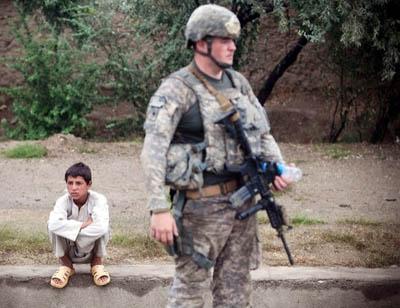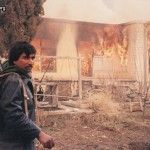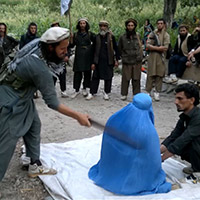By NICHOLAS D. KRISTOF
The war in Afghanistan will consume more money this year alone than we spent on the Revolutionary War, the War of 1812, the Mexican-American War, the Civil War and the Spanish-American War — combined.

US army spends US$ one million per year for each soldier it sends to war in Afghanistan. (Photo: Getty Images)
A recent report from the Congressional Research Service finds that the war on terror, including Afghanistan and Iraq, has been, by far, the costliest war in American history aside from World War II. It adjusted costs of all previous wars for inflation.
Those historical comparisons should be a wake-up call to President Obama, underscoring how our military strategy is not only a mess — as the recent leaked documents from Afghanistan suggested — but also more broadly reflects a gross misallocation of resources. One legacy of the 9/11 attacks was a distortion of American policy: By the standards of history and cost-effectiveness, we are hugely overinvested in military tools and underinvested in education and diplomacy.
It was reflexive for liberals to rail at President George W. Bush for jingoism. But it is President Obama who is now requesting 6.1 percent more in military spending than the peak of military spending under Mr. Bush. And it is Mr. Obama who has tripled the number of American troops in Afghanistan since he took office. (A bill providing $37 billion to continue financing America’s two wars was approved by the House on Tuesday and is awaiting his signature.)
Under Mr. Obama, we are now spending more money on the military, after adjusting for inflation, than in the peak of the cold war, Vietnam War or Korean War. Our battle fleet is larger than the next 13 navies combined, according to Defense Secretary Robert Gates. The intelligence apparatus is so bloated that, according to The Washington Post, the number of people with “top secret” clearance is 1.5 times the population of the District of Columbia.
Meanwhile, a sobering report from the College Board says that the United States, which used to lead the world in the proportion of young people with college degrees, has dropped to 12th.
What’s more, an unbalanced focus on weapons alone is often counterproductive, creating a nationalist backlash against foreign “invaders.” Over all, education has a rather better record than military power in neutralizing foreign extremism. And the trade-offs are staggering: For the cost of just one soldier in Afghanistan for one year, we could start about 20 schools there. Hawks retort that it’s impossible to run schools in Afghanistan unless there are American troops to protect them. But that’s incorrect.
CARE, a humanitarian organization, operates 300 schools in Afghanistan, and not one has been burned by the Taliban. Greg Mortenson, of “Three Cups of Tea” fame, has overseen the building of 145 schools in Afghanistan and Pakistan and operates dozens more in tents or rented buildings — and he says that not one has been destroyed by the Taliban either.
Aid groups show that it is quite possible to run schools so long as there is respectful consultation with tribal elders and buy-in from them. And my hunch is that CARE and Mr. Mortenson are doing more to bring peace to Afghanistan than Mr. Obama’s surge of troops.
The American military has been eagerly reading “Three Cups of Tea” but hasn’t absorbed the central lesson: building schools is a better bet for peace than firing missiles (especially when one cruise missile costs about as much as building 11 schools).
Mr. Mortenson lamented to me that for the cost of just 246 soldiers posted for one year, America could pay for a higher education plan for all Afghanistan. That would help build an Afghan economy, civil society and future — all for one-quarter of 1 percent of our military spending in Afghanistan this year.
The latest uproar over Pakistani hand-holding with the Afghan Taliban underscores that billions of dollars in U.S. military aid just doesn’t buy the loyalty it used to. In contrast, education can actually transform a nation. That’s one reason Bangladesh is calmer than Pakistan, Oman is less threatening than Yemen.
Paradoxically, the most eloquent advocate in government for balance in financing priorities has been Mr. Gates, the defense secretary. He has noted that the military has more people in its marching bands than the State Department has diplomats.
Faced with constant demands for more, Mr. Gates in May asked: “Is it a dire threat that by 2020 the United States will have only 20 times more advanced stealth fighters than China?”
In the presidential campaign, Mr. Obama promised to invest in a global education fund. Since then, he seems to have forgotten the idea — even though he is spending enough every five weeks in Afghanistan to ensure that practically every child on our planet gets a primary education.
We won our nation’s independence for $2.4 billion in today’s money, the Congressional Research Service report said. That was good value, considering that we now fritter the same amount every nine days in Afghanistan. Mr. Obama, isn’t it time to rebalance our priorities?



